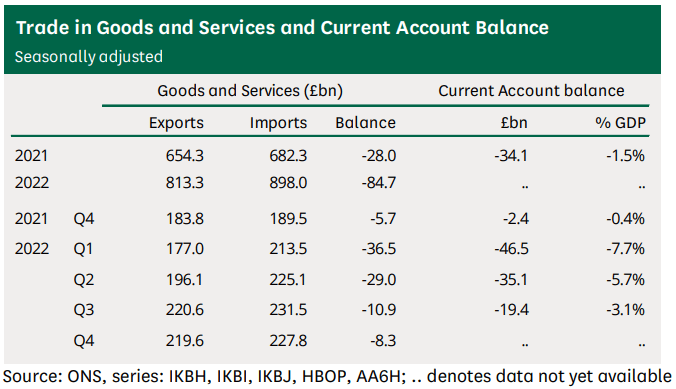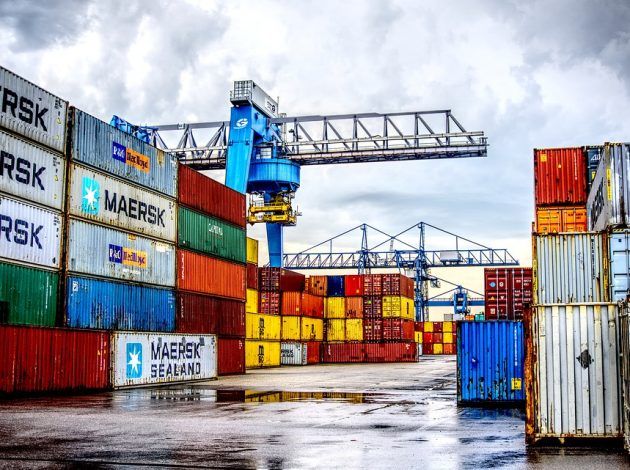UK exports of goods and services amounted to £813 billion and imports to £898 billion in 2022, according to data from the Department for International Trade.
The UK generally imports more than it exports, which means it runs a trade deficit.
The £230 billion deficit in trade in goods was offset by a £145 billion surplus in trade in services in 2022.

Thus, the overall trade deficit was £85 billion in 2022.
The United Kingdom had a trade deficit with the European Union of 43 billion pounds in 2021 and a trade surplus of 15 billion pounds with non-EU countries.
The trade deficit with all countries narrowed to £8.3 billion in Q4 2022, down from a deficit of £10.9 billion in the previous quarter.
Exports declined by 0.5% in cash terms during this period, while imports fell by 1.6%.
Exports of goods
In real terms, U.K. exports increased 10.3% in 2022, following a 2.2% increase in 2021.
The increase in 2022 consisted of a 10.4% increase in services exports and a 10.2% increase in goods exports.
Earlier, the International Monetary Fund (IMF) forecast that the volume of UK exports of goods and services would grow 4.8% in 2022, followed by 3.8% growth in 2023.
For its part, the OECD projected that the volume of British exports of goods and services would grow 9.7% in 2022, and 5.5% in 2023.
Between 2012 and 2022, British exports increased by 56.3% (at current prices), around 4.9% per year on average.
This increase has consisted of a 77.7% increase in services exports and a 40.1% increase in goods exports.
The relative importance of the European Union as an export market has declined over the last decade.
In 2021, the share of UK exports to the EU was 41.8%, down from 47.5% in 2011.
Between 2020 and 2021, exports to non-EU countries grew 6.3% to £380.6 billion, and exports to the EU advanced 5.8% to £273.7 billion.

